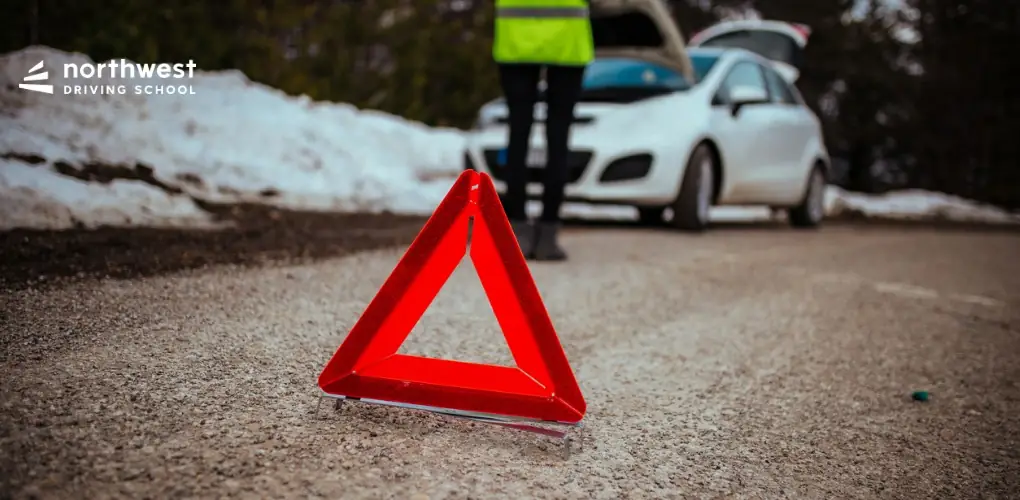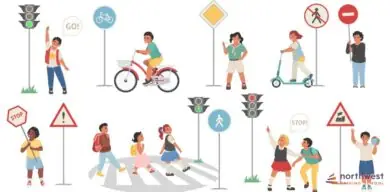- Traffic School
How To Complete An Emergency Stop In Your Driving Test

Making the perfect emergency stop can be nerve-wracking. Your mind comprehends all of the instructions given to you while managing speed and distance between other cars on the road; Before you know it, you’ve heard those words from your instructor: “Perform an Emergency Stop!”
Performing this correctly is paramount in passing your driving test, but luckily, we have compiled some tips for learner drivers to make performing an emergency stop a piece of cake. This blog post will provide several pointers that should put even beginner drivers at ease when taking that first dreaded driving test.
So if you are revising hard for getting behind the wheel soon, give us a read, as it could help ensure success on the day by scoring top marks during your Emergency Stop maneuver!
Read More: How To Perform An Emergency Stop
Table of Contents
- Learn The Basics Of An Emergency Stop And Practice Them At A Low Speed In A Safe Environment
- Understand The Signals You Need To Give When Performing An Emergency Stop
- Be Prepared To Complete An Emergency Stop In Any Situation – On Any Road Surface And With Other Vehicles Around You
- Practice Your Reaction Time By Completing Multiple Emergency Stops At Different Speeds
- Make Sure To Keep Your Eyes Focused Ahead And On The Brake Pedal As You Are Making The Stop
- Remember To Press Firmly But Gently On The Brakes During An Emergency Stop For Maximum Control And Safety
Learn The Basics Of An Emergency Stop And Practice Them At A Low Speed In A Safe Environment
No one wants to imagine being in a situation where they need to make an emergency stop, but it’s essential to be prepared just in case. By learning the basics of an emergency stop, you’ll have the knowledge and confidence to react quickly and safely if needed.
Practicing these skills at a low speed in a safe environment allows you to refine your technique and build muscle memory, so you’ll be ready to act instinctively in an actual emergency. Remember, the goal is not to panic but to remain calm and in control of the situation. With some practice, you can be prepared for whatever the road throws.
Understand The Signals You Need To Give When Performing An Emergency Stop
Before attempting an emergency stop in your driving test, ensure you understand all the signals that need to be given. This includes signaling your intentions to other drivers and cyclists on-road with clear indicators and brakes.
Signaling well in advance will help alert other road users that you are slowing down and potentially give them time to react safely. The signals required for an emergency stop will differ depending on the situation, so ensure that you understand all of the options and practice them until they become second nature.
Be Prepared To Complete An Emergency Stop In Any Situation – On Any Road Surface And With Other Vehicles Around You
In any driving situation, being prepared for the unexpected is crucial. An emergency stop is one such situation requiring a driver’s immediate response. Whether you’re driving on a smooth paved road or rugged terrain, having the skills to stop abruptly is essential.
Knowing how to stop your car suddenly while surrounded by other vehicles can save your life and those around you.
Therefore, it’s essential to practice emergency stops in different conditions so you’re prepared for any scenario that may arise. Remember, being a safe driver means responding to challenging situations quickly and responsibly.
Practice Your Reaction Time By Completing Multiple Emergency Stops At Different Speeds
Reacting quickly in times of emergency can make all the difference in staying safe. Practicing your reaction time through emergency stops is a great way to prepare for unexpected circumstances on the road.
You’ll learn how your vehicle responds in different situations by completing multiple stops at various speeds. Plus, you’ll feel more confident in reacting quickly and efficiently when faced with sudden obstacles or hazards.
Not only will this improve your safety on the road, but it will also give you greater peace of mind, knowing you’re prepared for whatever may come your way.
Make Sure To Keep Your Eyes Focused Ahead And On The Brake Pedal As You Are Making The Stop
As you approach a stop, keeping your focus ahead and on the brake pedal is essential. While this may seem like an obvious tip, it’s easy to get distracted at the moment and lose sight of where you should be looking.
By keeping your eyes on the road ahead, you can better anticipate potential hazards and prepare for sudden stops. Similarly, knowing where your brake pedal is and being ready to use it can help you avoid accidents in a split-second decision.
So, next time you come to a stop, remember to keep those eyes forward and steady on the brake pedal.
Remember To Press Firmly But Gently On The Brakes During An Emergency Stop For Maximum Control And Safety
When faced with an emergency stop situation, it’s easy to panic and slam on the brakes at full force. However, it’s important to remember that controlling the brake pressure is vital to coming to a safe stop.
Pressing the brakes firmly but gently will help you maintain maximum vehicle control, preventing skidding or swerving.
In fact, it can actually reduce the stopping distance, allowing you to come to a complete stop more quickly. So, next time you are in an emergency, take a deep breath and press on the brakes firmly but gently for the safest possible outcome.
If you want to take your practice a step further and get even more comfortable responding to potential scenarios while behind the wheel, contact Northwest Driving School to book your lessons today!



